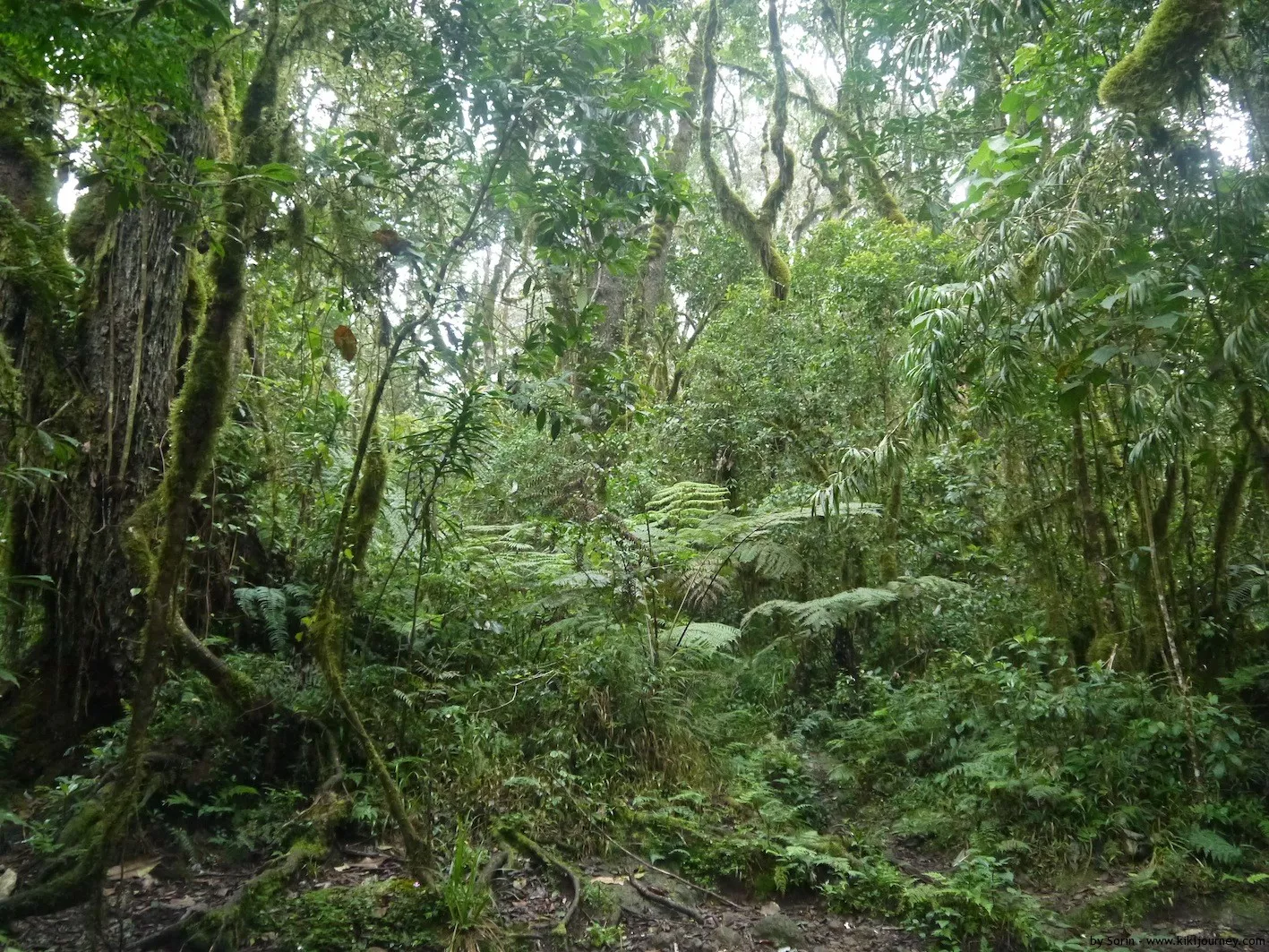Welcome to Kilimanjaro’s Rainforest
Trail in Kilimanjaro rainforest with I Artist Adventure Below the arctic peak of Kilimanjaro, a misty jungle covers the mountain slopes. Moss-covered trees, seas of ferns, and elusive monkeys abound in one of the Seven Summits’ only rainforests. This is where every Kilimanjaro trek begins. Lemosho, Umbwe, Machame, Marangu, Rongai – your first step is always into a sprawling jungle filled with animals and plants found in few other places on Earth. Unlike many of the world’s tallest mountains, with exclusively harsh, rocky landscapes, Kilimanjaro is covered in miles of forested land. In a way, it’s the perfect start to your trek – a warmup in dense jungle trails before emerging in the wide-open plains of the heath and moorland climate zones. 
What’s in Kilimanjaro’s Rainforest?
Hiking with I Artist Adventure on Kilimanjaro You’ll find thick blankets of moss, the region’s widest variety of flowering plants, a few different species of monkeys and lizards, a plethora of stunning birds, and other creatures. The lowlands and rainforest stretch from approximately 2,600 feet in elevation to 9,200 feet, and the area remains vibrant, warm, and humid year-round. As with many other parts of Tanzania, words simply don’t do the area justice. Here are some of our favorite pictures from the jungle.Swallowtail Butterfly in Kilimanjaro Rainforest
A swallowtail butterfly perches on a flower – one of 18 species of swallowtail found on Kilimanjaro.Swinging from Vines in the Rainforest
And you thought monkeys were the only animals swinging from the trees.Impatiens Kilimanjari Flower in Kilimanjaro Rainforest
The impatiens kilimanjari is a deep red flower only found in the rainforests of Mount Kilimanjaro.Kilimanjaro’s Rainforest Wildlife
While many animals in Kilimanjaro’s rainforest prefer to stay hidden, you can find them if you carefully search the forest canopy.Blue Monkeys
Keep your head up for a glimpse of the blue monkey. They spend most of their lives in the trees above, rarely venturing to the ground. Don’t be fooled by its name; blue monkeys aren’t blue. Their fur is grayish-olive, but some think its short length gives it a subtle blue appearance.Colobus Monkeys
With its distinct black-and-white coat and long, beautiful tail, it would be hard to mix up the colobus monkey and blue monkey. Similarly, the colobus spends most of its life in the trees.
Birds, Birds, Birds
You’ll likely hear the harsh caw of the silvery-cheeked hornbill and see sneaky white-necked ravens scouring the trails. There are dozens of bird species around Kilimanjaro. Here are just a few favorites:- Silvery-Cheeked Hornbill: Easily identifiable by the large cream-colored casque on top of its bill and silvery plumage around the eyes.
- Purple-Crested Turaco: A poor flier, relying on agility and short periods of gliding to move across the forest canopy.
Rare Sightings
Kilimanjaro’s forests contain other creatures, but seeing them is rare. Consider yourself one of the lucky few if you spot bush babies, the tree hyrax, or elephants and Cape buffaloes near Shira Plateau.- Nocturnal Genet: A nocturnal omnivore with retractable claws for climbing and catching prey. They grow to about 20 inches in length.
- Southern Tree Hyrax: Spends most of its time in the trees. Surprisingly, its nearest relatives include the elephant and the dugong.
- Mount Kilimanjaro Two-Horned Chameleon: Endemic to Tanzania and nearby Kenya. Sadly, often captured and sold as exotic pets.
Celebrate the harmony of art and nature in Tanzania!
Book Now to Paint Your Memories amidst Nature's Canvas.
+255 767 863 986
info@iartistadventure.com
